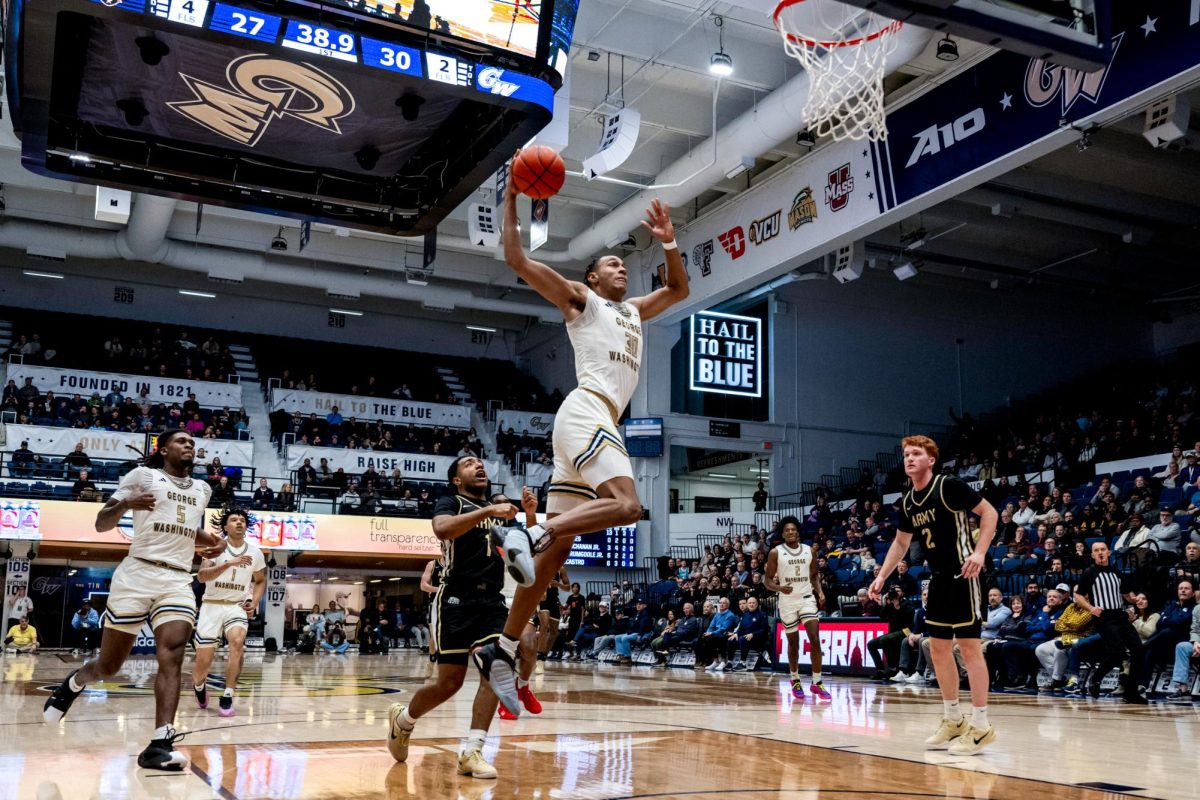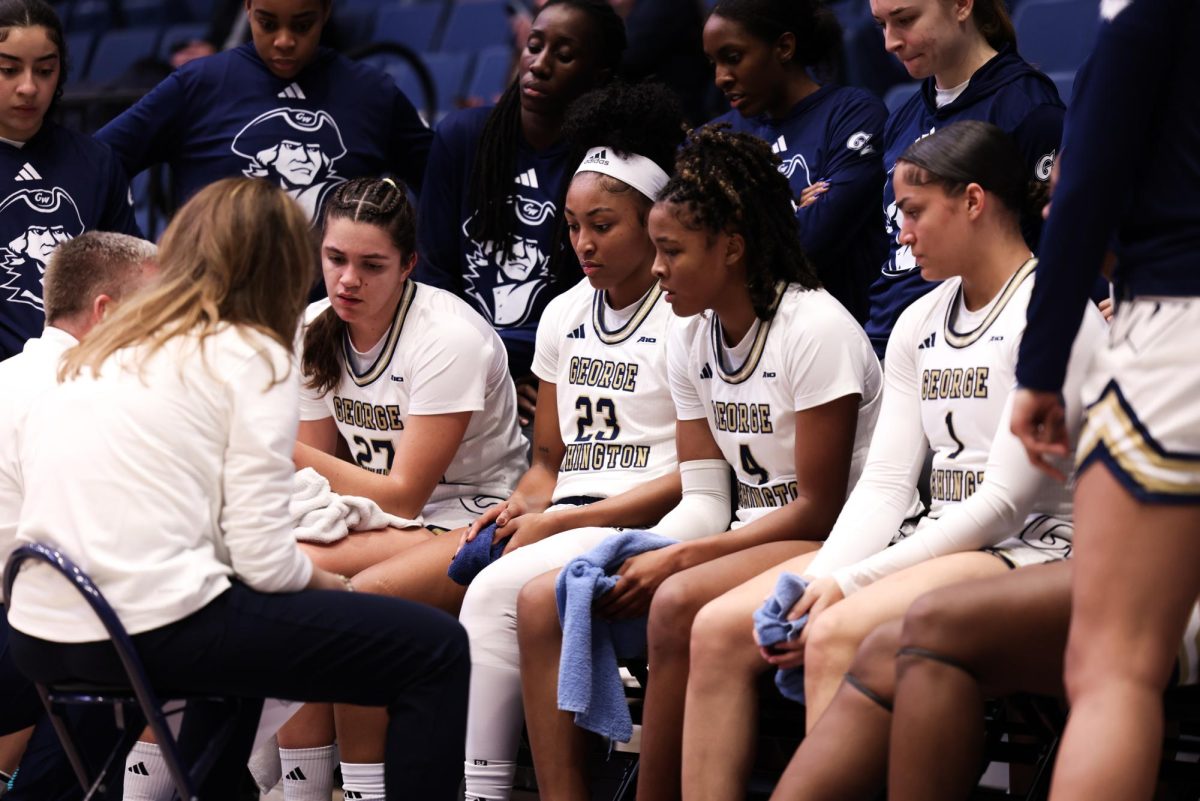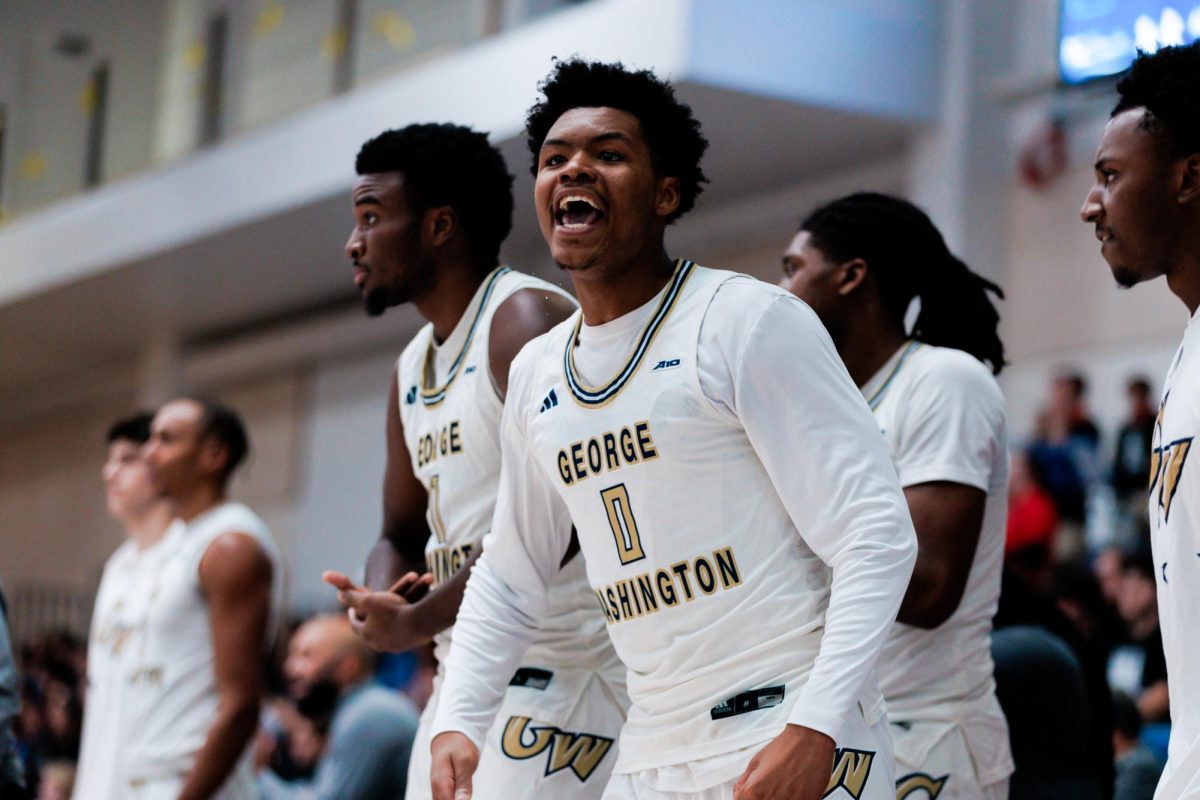Softball coach Leslie Moore said she needed a raise. Women’s crew coach Steve Peterson even got one. But both are now coaching at larger state universities, mainly because when they looked to GW for comparable funding, the University’s response was a common phrase in higher education today: the money just isn’t there.
University-wide budget cuts precipitated by a slumping economy have forced all departments to cut costs this year, and the Department of Athletics is no exception. The department’s combined operating and scholarship budget of about $11 million will be cut by just under 10 percent for the upcoming fiscal year, which means student-athletes will not have some of the perks they have become accustomed to.
“We have been very careful not to hurt the programs if we can help it,” GW Director of Athletics Jack Kvancz said. “So maybe you lose several thousand dollars per team, but those are on items I would say could be French pastry.”
Such items will include team apparel, excluding uniforms, and team air travel to games that are reachable by bus, Kvancz said. He also said the cuts could make it more difficult to reach out to the University’s alumni base for revenue, since other expenses slashed could include advertising and mass mailings.
“You might not have all the things you want, but we’re not going to hurt the core of the programs. So when people say you’ve got (other schools) laying off people and so on,” he said, pausing to knock on a wooden table, “we’re not in that yet. Where do we go if the money doesn’t come back in 12 months? Then maybe we have to change.”
Since men’s and women’s basketball receive the most funding, those teams will lose the most amount of money from the University.
Men’s basketball head coach Karl Hobbs said long road trips, like his team’s three-day excursion to Miami for a game at Florida International University last December, might not be possible this year.
Women’s basketball head coach Joe McKeown said he probably won’t know how much the budget cuts affect his team until after the upcoming season, but he hopes a loaded non-conference home schedule will help.
“We’re looking for other ways to raise money,” he said. “We got Tennessee at home, Boston College, Syracuse, Oregon and Georgetown – all at home. So hopefully that will help us by selling tickets.”
But basketball is the only GW sport that makes money at the gate, which means most teams will have to rely more heavily on fundraising. Each team has what is known as an “R-fund,” in which it can save revenue generated from non-University sources.
“You can always spend that on French pastries, but teams that are smart save it,” Kvancz said. “For example, women’s soccer raised $40,000 over three or four years, then went to play in Italy last year.”
For some smaller sports, however, fundraising has a more immediate impact. In the past, teams have factored money they planned on raising into their budgets. If the amount of money raised came up short, the department would make up the difference. But for this year, that policy has been changed.
Golf Head Coach Scott Allen said the policy change is a good one but it could also prove difficult for his team.
“If our alumni come through, hopefully there won’t be a noticeable effect on our ability to travel to tournaments and buy equipment,” he said. “But if they don’t…our spring break trip will be the first thing it affects.”
Allen said his team usually escapes the weather in Washington by traveling to a more golf-friendly destination such as San Diego, where the team can get in several good days of practice to prepare for the start of the spring season. Now, the team could potentially be forced to travel only as far as it can drive.
As a player at GW in the early 1990s, Allen said “some years we drove to North Carolina and it still snowed.”
But these potential effects are minimal compared to what some schools have endured in the past few years. Massachusetts, one of GW’s Atlantic 10 rivals, was forced to cut seven sports altogether in 2002, a move that reduced the school’s athletic budget by more than $1 million.
Last month, after an additional budget cut of more than $2.5 million was announced, the UMass athletic department said it will consider re-structuring itself to become an independent, non-profit organization. By separating itself financially from the university and the state of Massachusetts, the department would become totally self-sufficient.
A handful of other public schools such as the University of Florida and Clemson University already operate their athletic departments under separate, non-profit status. But Kvancz said GW would not consider separating his department in such a way, because private schools like GW, in contrast to larger public schools, do not have the financial support from large fan bases that would be necessary to become self-sufficient.
“To think that (GW) would do it any differently, we’re doing it now,” he said. “We have taken what the University has given us, and we have tried to go out to the general public to get that money.”
In the meantime, as GW’s varsity teams look to their fans and alumni to offset their financial hurdles, coaches seemed generally understanding of the situation they are in.
“It’s not just something that we have to do,” Hobbs said. “There comes a time when the University as a whole has to find some areas where they can cut back.”






